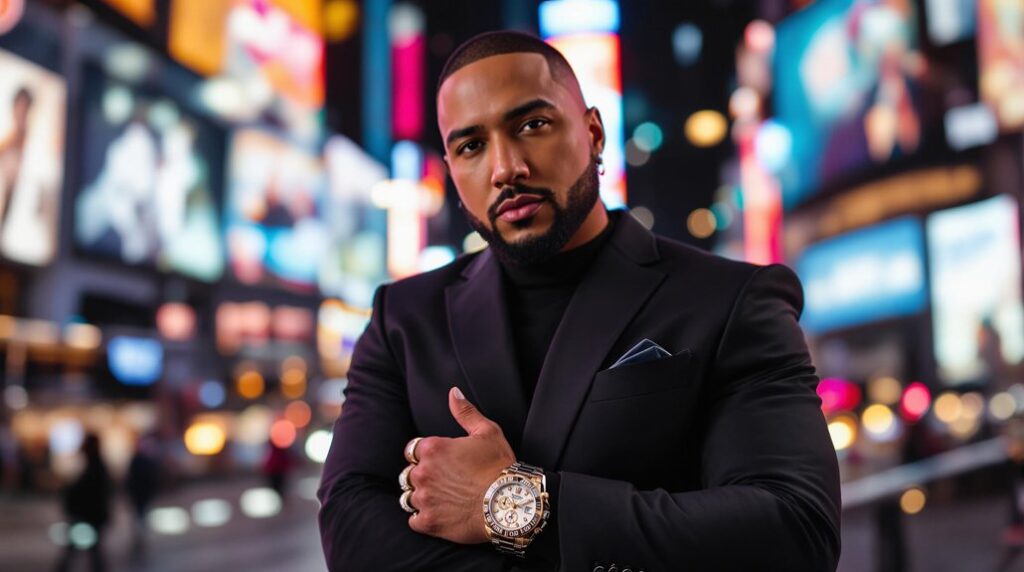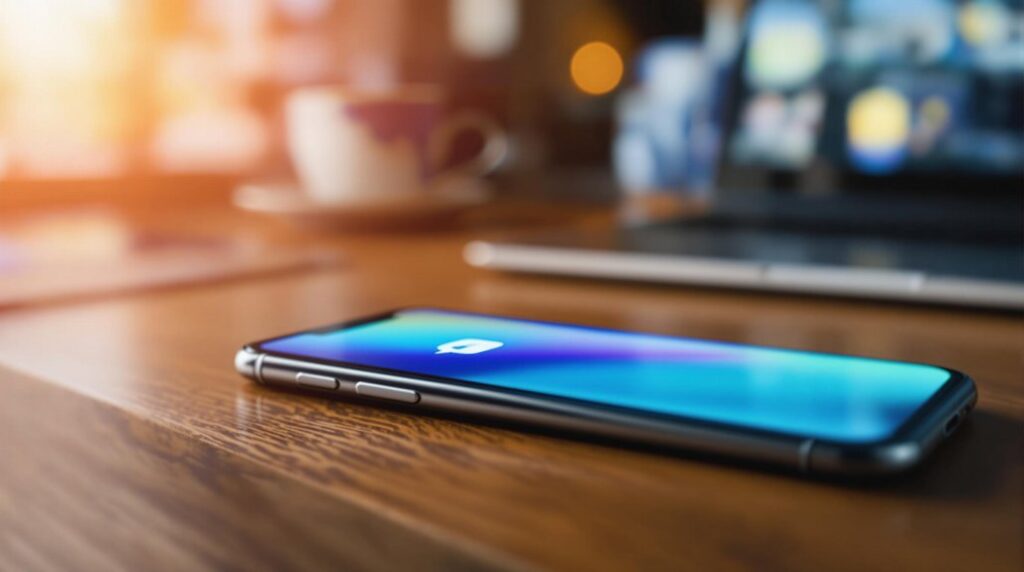Lifestyle influencers are individuals who share their personal experiences and insights on platforms like Instagram, YouTube, and TikTok. They cover diverse topics such as fashion, food, travel, and wellness. These influencers build connections through authenticity and relatability, engaging audiences with dynamic content like vlogs and life hacks. Their influence is measured by engagement rates and personal storytelling. For those curious about more detailed insights and strategies within their field, there's further exploration ahead.
Key Takeaways
- Lifestyle influencers share personal experiences in fashion, food, travel, and wellness to connect with their audiences.
- They build trust and relatability through authentic storytelling and high engagement on platforms like Instagram, YouTube, and TikTok.
- Content includes vlogs, motivational posts, life hacks, and "get ready with me" videos showcasing daily routines.
- Their influence is measured by engagement rates, with nano/micro influencers achieving ≥10% and macro influencers >2%.
- They play a critical role in influencer marketing by offering genuine endorsements and fostering brand loyalty.
Defining Lifestyle Influencers
Lifestyle influencers are dynamic individuals who captivate audiences by sharing a tapestry of personal experiences across spheres such as fashion, food, travel, and wellness. These content creators skillfully blend entertainment with insightful narratives, forging an authentic connection with their engaged audience. Their authenticity and relatability are paramount, as followers seek genuine recommendations and experiences. Operating primarily on platforms like Instagram, YouTube, and TikTok, lifestyle influencers curate content that resonates deeply with their audience, fostering trust and loyalty. They often engage in joint giveaways and collaborative promotions to boost engagement and reach. Their follower count can vary considerably, from nano-influencers with fewer than 10,000 followers to macro-influencers boasting over 100,000, each offering distinct levels of engagement and reach. Ultimately, lifestyle influencers embody the intersection of personal storytelling, trust, and digital influence.
Characteristics of a Lifestyle Influencer
When analyzing the characteristics of a lifestyle influencer, one finds individuals who artfully weave personal insights into various domains like fashion, travel, food, and wellness, thereby ensuring their content appeals to a wide and diverse audience. These lifestyle creators excel at crafting authentic content that resonates with followers, often featuring daily routines and motivational posts. Their ability to foster trust is evident in their high engagement rates, with nano and micro influencers achieving at least 10% engagement, and macro influencers maintaining rates above 2%. Additionally, they collaborate with brands to produce sponsored content that aligns seamlessly with their personal brand, ensuring endorsements remain genuine. Lifestyle influencers frequently use audience personas to enhance content relevance and engagement rates.
| Traits | Engagement | Collaboration |
|---|---|---|
| Authentic insights | Nano/Micro: ≥10% | Organic brand partnerships |
| Diverse topics | Macro: >2% | Align with personal brand |
| Relatable content | Motivational, life hacks | Sponsored content |
Types of Content Created by Lifestyle Influencers
In the dynamic sphere of digital content, lifestyle influencers captivate audiences with a diverse array of engaging formats that seamlessly integrate into everyday life.
These creators skillfully craft content such as vlogs, motivational posts, life hacks, and travel tips, aligning with their audience's daily routines. "Get ready with me" videos offer glimpses into personal morning rituals, effectively showcasing product usage in relatable contexts.
Day-in-the-life content provides immersive insights into the influencers' daily lives, enhancing engagement through relatable activities and product integration. Life hack posts deliver simple solutions for everyday challenges, fostering high interaction via comments and shares.
Meanwhile, daily motivation posts emphasize self-improvement and personal achievements, inspiring audiences to pursue a balanced lifestyle. Lifestyle influencers can boost engagement by incorporating interactive features like poll stickers in their content to invite audience dialogue and participation.
Through varied content, lifestyle influencers remain pivotal in shaping online engagement.
Importance of Authenticity in Influencer Marketing
Authenticity stands at the forefront of influencer marketing, as it fosters trust through genuine engagement, which is pivotal given that 90% of consumers favor recommendations from individuals over brands. Authentic influencers not only achieve a 50% higher engagement rate but also cultivate lasting connections by sharing personal stories and experiences, thereby strengthening community bonds. This genuine approach enables brands to enjoy a notably higher return on investment, as increased audience trust and loyalty drive more impactful interactions and conversions. Influencer collaborations can drive a 22% increase in conversion rates, further showcasing the effectiveness of authentic engagement in brand partnerships.
Trust Through Genuine Engagement
Trust is the cornerstone of successful influencer marketing, shaping the connection between influencers and their audiences.
Authenticity in engagement plays an essential role, as 92% of consumers trust recommendations from individuals over traditional advertisements. Nano and micro-influencers, with high engagement rates of 10% or more, often foster a deeper trust and connection.
Followers are drawn to relatable content, with 86% seeking authenticity in supported brands. Campaigns featuring genuine endorsements see a 37% rise in brand loyalty, underscoring the value of transparent, real-life experiences.
Social media platforms like Instagram and TikTok provide a community-like environment for direct engagement, enhancing authentic interactions.
- 92% of consumers trust individuals over ads
- 10%+ engagement rates in nano/micro-influencers
- 86% of consumers desire authenticity
- 37% increase in brand loyalty
- Community-like environments on social media platforms
Building Lasting Connections
Crafting enduring bonds between influencers and audiences hinges on the power of authenticity. In influencer marketing, authenticity is paramount, with 86% of consumers influenced by genuine connections. Brands aligning with authentic lifestyle influencers witness a 50% higher engagement rate compared to traditional advertising. Nano and micro influencers, known for engagement rates exceeding 10%, are perceived as trustworthy, facilitating lasting connections.
| Influencer Type | Engagement Rate |
|---|---|
| Nano | Above 10% |
| Micro | Above 10% |
Millennials, in particular, trust brand recommendations from authentic influencers, underscoring the necessity for value alignment. Consistent communication and granting creative freedom to influencers enhance authenticity, resulting in impactful campaigns. Consequently, brands fostering authentic partnerships not only boost engagement rates but also cement durable connections with their target audiences.
How to Identify the Right Lifestyle Influencer for Your Brand
How does a brand navigate the complex terrain of choosing the right lifestyle influencer? The process begins with defining clear goals, whether increasing brand awareness or driving conversions. Brands should assess influencers based on engagement rates—nano and micro influencers should demonstrate at least 10%, while macro influencers should exceed 2%. Social listening tools can uncover influencers already aligned with the brand's message, resonating with both the target audience and brand values. Constructing detailed customer personas helps in aligning influencers with demographics, interests, and lifestyle preferences. It's also essential to consider the potential for higher conversion rates when selecting influencers, as this can significantly impact campaign success. Define clear partnership objectives. Evaluate influencers' engagement rates. Utilize social listening tools. Develop detailed customer personas. Guarantee resonance with brand values. Choosing the right influencer is essential for effective brand communication.
Strategies for Successful Collaboration With Lifestyle Influencers
When starting a collaboration with lifestyle influencers, brands must strategically align their objectives with the influencer's unique style and audience to guarantee mutual success. Clear goals, like boosting brand awareness, guide the partnership. Authenticity is crucial, so auditing engagement rates is essential; nano and micro influencers should exceed 10%, while macro influencers should maintain above 2%. Building genuine relationships through creative freedom and open communication strengthens the collaboration. Social listening can identify influencers discussing similar products, guaranteeing a natural fit. Tailored outreach enhances connections, by recognizing content aspects appealing to the brand. Influencer partnerships are a cost-effective strategy that often outperforms traditional advertising approaches, providing deeper insights into target demographics and audience interests.
| Key Factor | Recommended Approach |
|---|---|
| Number of Followers | Assess fit with brand's target audience |
| Authentic Product | Guarantee influencer's genuine interest |
| Collaboration | Foster creative freedom and partnership |
| Engagement Rates | Target higher rates for authenticity |
| Initial Connection | Personalize outreach with specific compliments |
Measuring Success in Lifestyle Influencer Campaigns
In evaluating the success of lifestyle influencer campaigns, key performance indicators such as engagement rates, brand awareness, and conversion rates play pivotal roles. Engagement rate analysis, specifically, offers insights into the effectiveness of an influencer's connection with their audience, with nano and micro influencers aiming for at least 10%, while macro influencers should exceed 2%. Additionally, audience demographics provide valuable insights that help tailor content to resonate more effectively with the target audience, ensuring that campaigns reach the right people and achieve desired outcomes.
Key Performance Indicators
Key performance indicators (KPIs) are indispensable tools for measuring the success of lifestyle influencer campaigns, providing brands with essential insights into their effectiveness and return on investment.
Engagement rate, a primary KPI, is fundamental for evaluating the interaction levels between influencers and their audience.
Brand awareness can be gauged through metrics like reach and impressions, revealing the breadth of audience exposure.
Conversion rates are critical for evaluating the direct impact on sales or sign-ups driven by influencer promotions.
Audience sentiment analysis offers a window into consumer perceptions, analyzing feedback and comments to understand brand alignment.
Additionally, tracking website traffic using unique URLs or discount codes helps brands measure the tangible outcomes of influencer efforts.
Engagement Rate Analysis
Having established the importance of key performance indicators in influencer marketing, the focus now shifts to the engagement rate, a metric of significant importance in evaluating the impact of lifestyle influencer campaigns. Calculated using the formula ( text{Engagement Rate} = left(frac{text{Post Engagements}}{text{Number of Followers}}right) times 100 ), this metric allows brands to assess the effectiveness of their collaborations. A robust engagement rate, often fueled by authentic content, typically corresponds with a loyal follower base, influencing brand partnerships. For nano and micro influencers, a rate of at least 10% is ideal, while macro influencers should aim for above 2%. Brands are advised to prioritize engagement rates over mere follower counts to guarantee impactful audience interactions.
| Influencer Type | Ideal Engagement Rate |
|---|---|
| Nano | ≥ 10% |
| Micro | ≥ 10% |
| Macro | > 2% |
| Authentic Content | Higher Rates |
| Brand Partnerships | Influenced by Engagement Rate |
Popular Platforms for Lifestyle Influencers
While exploring the digital terrain, it becomes evident that Instagram, YouTube, and TikTok stand out as the principal platforms for lifestyle influencers. These social media platforms offer distinct features that cater to influencers' needs for content creation and audience engagement. Instagram, with its visual-centric design, is favored for its ability to showcase fashion and beauty. YouTube allows for in-depth vlogs and tutorials, providing a space for detailed storytelling. TikTok, with its rapid growth, attracts lifestyle influencers with its short, creative videos that appeal to younger audiences. Each platform has unique capabilities enhancing reach and engagement:
- Instagram Stories: Daily updates that keep followers engaged.
- YouTube Monetization: Revenue opportunities for influencers.
- TikTok Challenges: Viral trends for creative expression.
- Visual Showcase: Instagram's forte.
- Algorithmic Discovery: TikTok's advantage.
To effectively engage audiences on Instagram, influencers should capitalize on Instagram Video Formats, such as Stories and Reels, to maintain high engagement and visibility.
Trends in Lifestyle Influencer Marketing
As the terrain of lifestyle influencer marketing evolves, several trends are shaping the industry with significant impact.
The rise of micro-influencers is notable, as their smaller but highly engaged followings foster brand loyalty and authenticity.
Video content, particularly on platforms like TikTok and Instagram Reels, is essential for creating dynamic storytelling and relatable connections.
A growing emphasis on wellness and mental health reflects a societal shift towards self-care, with influencers advocating positive lifestyle changes.
Additionally, sustainability and eco-friendly practices are becoming mainstream, as influencers promote conscious consumerism and appeal to environmentally-conscious audiences.
Diverse representation within the influencer space is increasingly valued, as brands and audiences seek inclusivity and voices that mirror various cultures, backgrounds, and lifestyles.
Brands are increasingly leveraging user-generated content to build trust and authenticity, as it showcases real-life experiences and fosters community involvement.
Benefits of Partnering With Lifestyle Influencers
Partnering with lifestyle influencers offers a multitude of advantages for brands looking to enhance their marketing strategies. These influencers provide authentic recommendations that align closely with consumer behavior, driving higher engagement rates. With 49% of consumers relying on such recommendations, brands experience a significant boost in brand awareness. The power of lifestyle influencers lies in their ability to tap into niche audiences, with micro-influencers achieving remarkably higher engagement rates compared to their macro counterparts. Additionally, these partnerships are financially rewarding, boasting an impressive return on investment. Influencers excel in storytelling, crafting relatable content that resonates with followers and enhances brand relatability. By leveraging video content, brands can further boost engagement and reach broader audiences through dynamic storytelling.
- Authentic recommendations drive consumer trust
- Higher engagement rates with niche audiences
- Increased brand awareness and visibility
- Impressive return on investment
- Enhanced brand storytelling and relatability
Challenges in Working With Lifestyle Influencers
Maneuvering the terrain of working with lifestyle influencers presents several significant challenges for brands. One primary concern is ensuring authenticity and genuine engagement. Brands must meticulously audit influencers to verify their follower counts and engagement rates, as inflated numbers can mislead.
Additionally, maintaining a consistent online presence can lead to influencer burnout, affecting content quality and potentially undermining brand partnerships. Communication hurdles also arise due to differing creative processes, leading to misaligned expectations.
The dynamic nature of social media trends further complicates matters, as influencers must continuously adapt to keep content fresh, impacting partnership effectiveness.
Ultimately, measuring the ROI of influencer campaigns poses a complex challenge, requiring clear metrics to accurately track engagement and conversions from the outset.
Future of Lifestyle Influencers in Marketing
The terrain of lifestyle influencers in marketing is poised for transformation, as evolving content strategies embrace the authenticity of micro-influencers and their connection with niche audiences.
Emerging platform trends highlight the dominance of short-form video content, with formats like Reels and TikToks capturing audience attention through engaging, rapid storytelling.
This shift is further complemented by a rising focus on inclusivity and sustainability, as brands and influencers align to meet the demands of increasingly conscious consumers.
Evolving Content Strategies
As the digital terrain continues to evolve, lifestyle influencers are redefining content strategies to better align with shifting consumer preferences and technological advancements. They are weaving personal lives into public narratives, offering glimpses of authenticity that resonate with audiences.
A focus on wellness and mental health has become paramount, reflecting a growing consumer demand for empathetic, supportive content. Additionally, eco-friendly products and sustainability are at the forefront, with influencers promoting ethical living to appeal to environmentally conscious followers.
Video content, particularly on platforms like TikTok and Instagram Reels, is a powerful tool, showcasing daily routines and relatable moments in short, engaging clips.
Influencers are also:
- Emphasizing authenticity
- Collaborating with diverse voices
- Sharing relatable everyday experiences
- Spotlighting sustainable brands
- Promoting inclusivity and diversity
Emerging Platform Trends
How are emerging platform trends shaping the future of lifestyle influencers in marketing?
Platforms like TikTok and Instagram Reels have transformed the environment with a focus on short-form video content. This format enables influencers to present daily routines and product integrations in an engaging manner.
By 2025, micro-influencers are anticipated to dominate due to their ability to foster higher trust and conversion rates with their more engaged audiences. Authenticity remains a cornerstone of consumer trust, urging influencers to share personal stories and challenges.
Additionally, the integration of AR and VR in social media is set to offer immersive experiences, allowing brands to present products innovatively.
These emerging platform trends signify a dynamic shift in the role of lifestyle influencers in marketing.
Frequently Asked Questions
What Does a Lifestyle Influencer Do?
A lifestyle influencer crafts lifestyle content to captivate audiences, fostering audience engagement through authentic storytelling. They strategically use social media platforms, forming brand partnerships to seamlessly integrate products, enhancing both visibility and credibility within their niche communities.
What Is an Influencer and What Do They Do?
An influencer leverages social media to shape audience opinions through strategic content creation. They foster brand partnerships, driving purchasing decisions by maximizing audience engagement. This dynamic role blends creativity with marketing, delivering targeted promotions that resonate with followers.
What Does It Mean to Be a Lifestyle Creator?
To be a lifestyle creator means crafting lifestyle content that captivates audience engagement while establishing personal branding. They thrive in niche markets, offering relatable insights and recommendations, and often collaborate with brands to enhance their influence and authenticity.
Who Are the Most Popular Lifestyle Influencers?
Top lifestyle influencers include Tanya Khubchandani Vatsa, Smriti Khanna, Garima Bansal, Shreya Jain, and Malvika Sitlani. Emerging lifestyle stars leverage influencer collaborations, enhancing their social media impact and expanding their audience reach considerably.
Conclusion
In the dynamic terrain of marketing, lifestyle influencers hold significant sway due to their authentic connections with audiences and diverse content creation. Brands seeking to leverage this power must prioritize genuine partnerships, aligning with influencers who resonate with their values and target demographics. While challenges persist, such as ensuring authenticity and steering through evolving trends, the future of lifestyle influencers remains promising. Their ability to adapt and engage will continue to redefine marketing strategies in an increasingly digital world.




